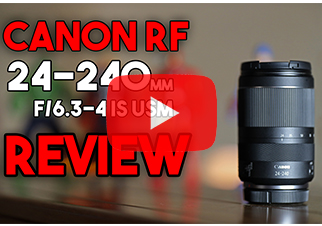
Category Archives: reviews


Fujifilm X-A7 Review

GoPro Hero 8 Review

GoPro Max Review
OnePlus 7T or OnePlus 7 Pro: Which should you Buy?
Canon RF 28-70 VS Nikon Z 24-70 Lens Comparison with samples

Fujifilm X-T30 Full Review
Fujifilm has dubbed the X-T30 the “Little Giant” – a small camera with big performance. It’s the successor to the X-T20, and it’s a kind of cut-down version of the company’s flagship X-T3 model which shares a lot of that camera’s technological advances. You’d still pick the X-T3 for speed, handling with bigger lenses and high-end 4K video, but the X-T30 is ideal if you want a sophisticated, high-performance mirrorless camera that’s also small and not too expensive. This makes the X-T30 a great little all-round camera that’s right at the cutting edge of APS-C mirrorless camera technology, but well under the Rs 1,00,000 price barrier. If you’re a first-time Fujifilm user and you need a kit lens to go with it, that will probably push it over that figure.
Canon EOS RP Full Review
Canon EOS RP is the Canon’s latest offering in the full-frame mirrorless segment. A smaller version of Canon EOS R with a compact and light-weight body, Canon has launch EOS RP for the users looking for some budget friendly full frame mirrorless camera. In terms of dimensions, Canon EOS RP is nearly 30% smaller and almost 200 grams lighter than Canon EOS R. The EOS RP really is impressively smaller than many of Canon’s DSLRs that have smaller APS-C sensors. Despite this, Canon has made sure the controls aren’t constricted, the grip is comfortable, and both the viewfinder and screen are nice and big.
Canon EOS RP Key Specifications
-
26.2MP Dual Pixel CMOS sensor
-
4K/24p (from 1.7x crop region)
-
4 fps continuous shooting with continuous AF (5 without)
-
Pupil detection AF in continous/Servo AF mode
-
AF rated to -5EV
-
Digic 8 processor
-
2.36M dot OLED viewfinder
-
Fully-articulated 1.04M dot touchscreen
-
Twin command dials
Look, Body and Feel
The Canon EOS RP comes with a 7.62-cm Vari-angle OLED touch panel and DIGIC 8 image processor with Dual Pixel CMOS AF. The offering weighs 485grams with dimensions 132.5 x 85.3 x 70.0mm. It carries a special Feature Assistant which helps users with navigation. The offering also has an RF lens mount which was introduced in the EOS R and it has a short focal length of 20mm. Users can also use their existing collection of EF and EF-S lenses via an optional mount adapter. The Canon EOS RP is kitted with a 26.2MP Full-Frame CMOS sensor with an ISO range of 100-40,000 and it can be expanded to the range of 50-1,02,400. The Auto Lighting Optimizer feature of the camera helps in balancing the darkest and brightest parts of a picture for better low-light results. The Digital Lens Optimizer corrects distortions, and the CMOS sensor provides Optical Image Stabilisation. Additionally, the Dual Pixel CMOS AF provides autofocus speed of up to 0.05 seconds. There are 4,779 selectable AF positions and the Eye Detection AF which works in Servo AF mode focuses on the subject’s eyes even when it is in motion. The camera is also capable of shooting videos with 4K resolution at 24p/25p and the Combination IS provides stable footage even without a tripod. It has an LP-E17 battery and along with that, the camera can be charged by the optional USB Power Adapter PD-E1 through its Hi-Speed USB 2.0/ Type C Interface. One can also transfer data via Wi-Fi and Bluetooth Low Energy technology. The product also performs network-related functions using Canon Camera Connect app for mobile devices. The continuous shooting speed of the camera is 5fps in One-Shot AF and 4ps in Servo AF.
Compared to the existing EOS R, the RP is a bit more ‘compact’ and significantly slimmed down, against other full-frame interchangeable lens cameras, only Sony’s original A7 is lighter. Despite its light weight, the RP’s all-plastic body feels reassuringly solid, with little in the way of creaks or obvious signs of cost-cutting in its build. It’s at a price point where we can’t really complain about the lack of weather-sealing, but at least the RF lenses so far have a covering to keep dust and moisture entering around the mount. The grip on the RP is quite comfortable, and it may not be comfortable for use with larger lenses, the optional grip extender will help here. Though a fractionally larger grip that could have also accommodated a larger battery was much needed in EOS RP. The RF 24-105mm F4L IS USM which came with the camera works good, but is not up to mark as the lens is bit heavy which makes the hold uncomfortable. The control on the EOS RP are well implemented than Canon EOS R. The touch bar form EOS R is missing in EOS RP, which is a good point. Customization buttons are provided by Canon, giving you plenty of flexibility with some buttons. If you want to use the four-way controller for AF point placement instead of the touchscreen, there’s still no option to make your chosen AF area move faster, which we would really like to see on EOS RP and the EOS R. The rear screen provides and excellent and responsive touchscreen experience. The electronic viewfinder has loer resolution than Canon EOS R but it still provides good colours and contrast.
Image Quality
The Canon EOS RP has a 26.2 megapixel full-frame sensor. The images look nice and colourful. The exposures were correctly exposed and had a good result in terms of sharpness. The Canon EOS RP does not have an in-body stabilisation system built in which is a major miss on the Canon EOS RP. The depth of field in the images are quite good and smooth as the ditance between the lens the sensor is less, which is a plus point for Canon EOS RP. Looking at the low light images, Canon EOS RP performed pretty good with colours, though it had a liitle reddish tinge in the images. The low light portrait captured on EOS RP resulted with good colours and sharpness.
.jpg)
.jpg)
ISO Performance
The ISO performance of this camera isn’t bad. We really liked how the camera handled ISOs upto 6400 well. While other mirrorless cameras in this category might be a better perfomer or the same, this camera is by no means any less competent. The camera faulters a bit at ISO 12800 and shows signs of grains and becomes almost unusable at ISO 12800 as the picture loses edge sharpness.

Video Quality
The video quality of Canon EOS RP isn’t bad, but there are few points which needs to be noticed. The Eye Auto Focus Tracking in EOS RP is ok in comparison with other full-frame mirrorless camera, though it had lag in focusing the eye when the subject is moving. While the focusing speed is fast and smooth in the videos. Canon EOS RP is missing in-body stabilisation system and the stability is totally dependent on the lens. While shooting the video with turning off the stabilisation on lens, the camera performed the same as other full-frame mirrorless camera do. The major part to notice in video section of Canon EOS RP is that it shoots Full HD on 60fps which link to the missing of slow mo in the camera as there is no 120fps available and it also shoots 4k with 1.7x crop frame of the sensor at 25fps only.
Conclusion
The Canon EOS RP is priced at Rs 1,10,495 for the body only, which is much more lower than the other full frame mirrorless camera. However, The Canon EOS RP misses out on a few things than the other full frame mirrorless camera like in-built stabilisation system and joystick. However, the images from the Canon do not dissapoint when it come to quality and colour reproduction. The images along with he ISO performance is definiltly something you can look forward to if you have a lower budget for a full-frame mirrorless.
Nikon D3500 vs Nikon D3400 Review
Nikon D3500 vs D3400 Review
Many of you have been asking us to review the Nikon D3400 against the new D3500 since a while. And if you already have bought the older generation cameras like the D3100, 3300 or the 3400, then this is a question that must be on top of your head. But you aren’t alone, there are many like you and this article is focused specially on people like you.
If you aren’t much of a reader and would like to see a video instead then you can log onto our YouTube Channel and see a complete comparison.
Similar Features:
So while there is much to deliberate when it comes to the new D3500. It has literally taken Nikon two whole years to launch the new update. And that is fair since the new product cycle in the photography industry is approximately that. But what is important to note is that there are many similarities between the two cameras.
- Same size sensor: Both the cameras feature the same size sensor, which is 24.2 megapixel and are powered by the Expeed 4 processor. Unfortunately the new D3500 still doesn’t support in-body image stabilization. But while the specs of the sensors are the same, according to Nikon the sensor on the D3500 has been tweaked slightly as compared to the 3400 in order to give better performance. So whether this has an effect on its performance and the output is something that we will check later.
- ISO capability and FPS: They both have an ISO range of 100-25,600 and shoot at 5 fps. They also feature the same 11-point focus system that has been around in the D3400 since years. At the back it has the 3-inch LCD screen with features 921k resolution.
So largely the D3500 features the specs as the D3400. The D3500 comes at Rs. 34,500 approximately with the 18-55mm lens. On the other hand the D3400 has been discontinued by Nikon and might be difficult to find in the Nikon authorised stores. But on aggregator platforms like Amazon and Flipkart one can easily find a deal for the camera at approximately Rs. 30,000 (which might include a dual lens kit).
So what are the Key Differences?
The first thing you notice is that the D3500 it is lighter a slightly compact than the D3400 (it is 30 grams lighter than the 3400). Next, all the buttons have moved to the right making it easy to operate. And since these buttons have moved to the right and the body is more compact, the screen seems a lot bigger.
The camera also features a deeper grip as compared to the D3400. But this deeper grip also means that your fingers might get stuck in the 3500, especially for someone which has bigger hands. The plus point however is that it offers a much more handy grip even when you attach and use more heavier lenses.
One of the key improvements in the 3500 is the increased battery life. The battery life has been improved by over 30% in the 3500 as compared to the 3400. As per the CIPA ratings a single charge can now give 1550 shots as opposed to the 1200 pics that the 3400 could give using the same battery.
What’s missing?
But where they have improved all of these things I felt that they should’ve also worked on some of the things to improve from the D3400.
For instance:
- No external microphone input: The camera still doesn’t come with an external microphone input. Now this was not there in the D3400 also, but in today’s day and age with users migrating towards using the cameras as video recording devices, I think this is a must have.
- Less customisable buttons: The D3500 unfortunately has less customisable buttons as compared to the D3400. In the previous camera, there was a Fn button on the front-left side of the body. But this has been removed in the D3500 in order to give the front a cleaner look. While that might be great, a quick customisable button usually proves very useful for consumers who want to toggle and change settings quickly.
No swivel screen: And as the other cameras in this category, the 3500 doesn’t have a swivel screen. Now this is something that you can still live with. But not have a touch screen at the back is not great. With more and more users looking to upgrade from their smart devices to the entry-level segment, a touch screen is an important feature to have.
Performance:
With both the cameras featuring the similar specs one might think that the performance of the cameras might be the same. But there certain changes in the performance that are noticeable.
Daylight Pic:

In terms of the performance of the cameras in daylight conditions, there’s hardly any difference in the pictures between the 2 cameras. The image of the flower that we have shot here is well saturated, sharp and also reproduces the colours accurately. Although the image from the D3500 seems slightly brighter and better exposed. But the difference between the two cameras is marginal.

As for the picture of the props and toys, the colour is also poppy, well-rounded and overall nearly similar. But in this case as well the sharpness and details in the D3500 is slightly higher than the D3400.
Daylight portrait:

It is nearly the same with the portraits as well during the day. All the images shot with both the cameras are shot on the exact same settings. And again the pictures are good. But the overall images in the 3500 seemed slightly more saturated as compared to the 3400. The image also has a slightly warmer cast than the 3400.
Low-light pictures:

In terms of the low-light images, whether portrait or otherwise we can see slight changes in the images. For instance the biggest one is the use of the older lens on the 3400, you can see a lot of lens flaring in the images from the 3400 as compared to the images from the 3500.

But as for the images again there wasn’t much to choose from. The images are nearly identical and one can hardly tell the difference.
Video Performance:
The video performance for the cameras was what differentiated things for me. While both cameras seemed to have a slight focus tracking problem, the 3500 was a lot better than the 3400. And while you don’t have a swivel screen making it easy for your to use it as a vlogging camera, there is enough there to make the cut in this department.
Conclusion:
So what is the overall answer then? Should you go for the D3500 if you are a new user or if you have an older camera like the D3100, 3300 or 3400? Well this is a mixed bag for me honestly. If you are in the market to buy a new camera then yes surely you should buy the D3500.
But if you are using an older camera like the 3300 or the 3100 then there are a lot of formidable upgrades that make the D3500 interesting enough for you. And if you already using the D3400 and are thinking of upgrading then this is a question best answered by you. If you see the specs then the specs are same, but there are small tweaks that have made the performance of the D3500 slightly better. So if you have the extra money and can afford that upgrade then you could go with the D3500.
But for the new users I would also suggest that you look at some of the other mirrorless options in the market around the same price range since that is where the future is heading according to us.
Text: Bhavya Desai
Best Mirrorless Cameras under Rs.50,000
It is very clear that Mirrorless Cameras are the thing of the future. All manjor manufacturers have not taken the plunge in this technology and this has eliminated the need of heavy camera bodies and lenses to some extent. They are priced almost in similar price brackets as the DSLRs and also the image quality is a good competition with the DSLRs. This month we asked the manufacturers to send us their Best Entry-Level Mirrorless Cameras so we could put them to a head-to-head test in this year’s shootout. The price parameter for the cameras was set between Rs. 45,000 to Rs. 55,000
In this video we test the best cameras you can buy under Rs.50,000 ($700). The contenders in this line up are the Canon M5, Canon M50, Fujifilm XT100 and the Panasonic G85. We put them to test and see which one should you buy?
